HALL - CARPENTER, CO.
By Edwin T. Scallon, Copyright © 1990, 1995, 2008 All Rights Reserved
ACCIDENT RECONSTRUCTION AND BAC CALCULATION PROGRAMS
IDENTIFICATION OF TIRE MARKS
Tire marks, whether they are skid marks, acceleration marks, scrub marks, skip marks or curved yaw marks are rather simple to recognize once familiar with their patterns. The following tire marks marks will indicate the direction of travel of the vehicle which left the marks and once measured will give either the minimum speed that the vehicle was traveL
SKID MARKS
OVERLAPPING SKID MARKS SKIP SKID CENTRIFUGAL YAW MARKS
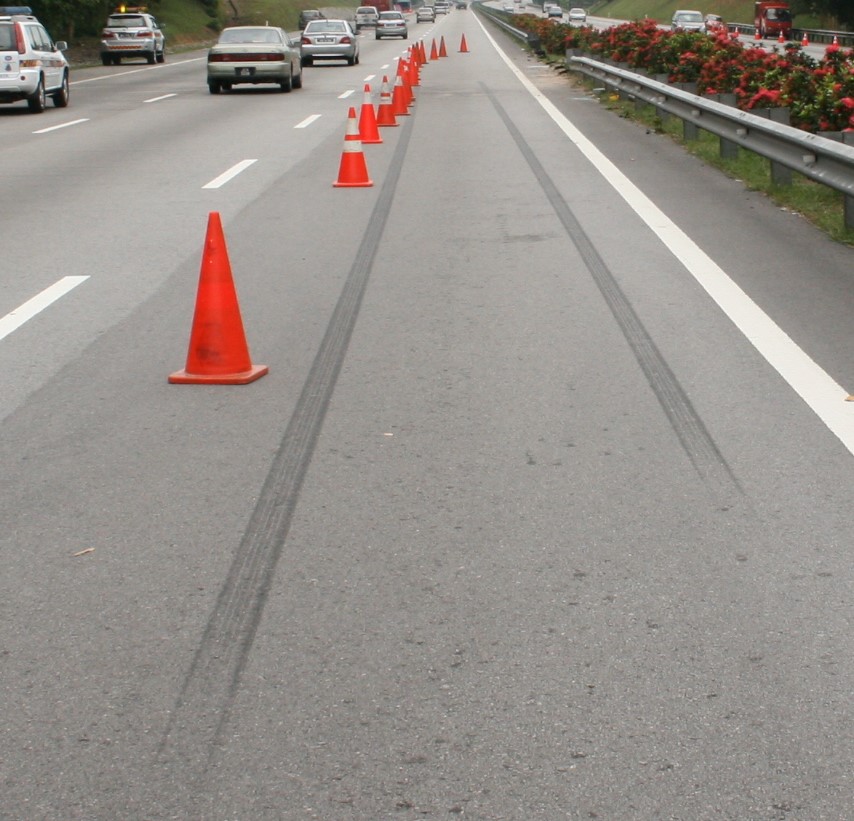
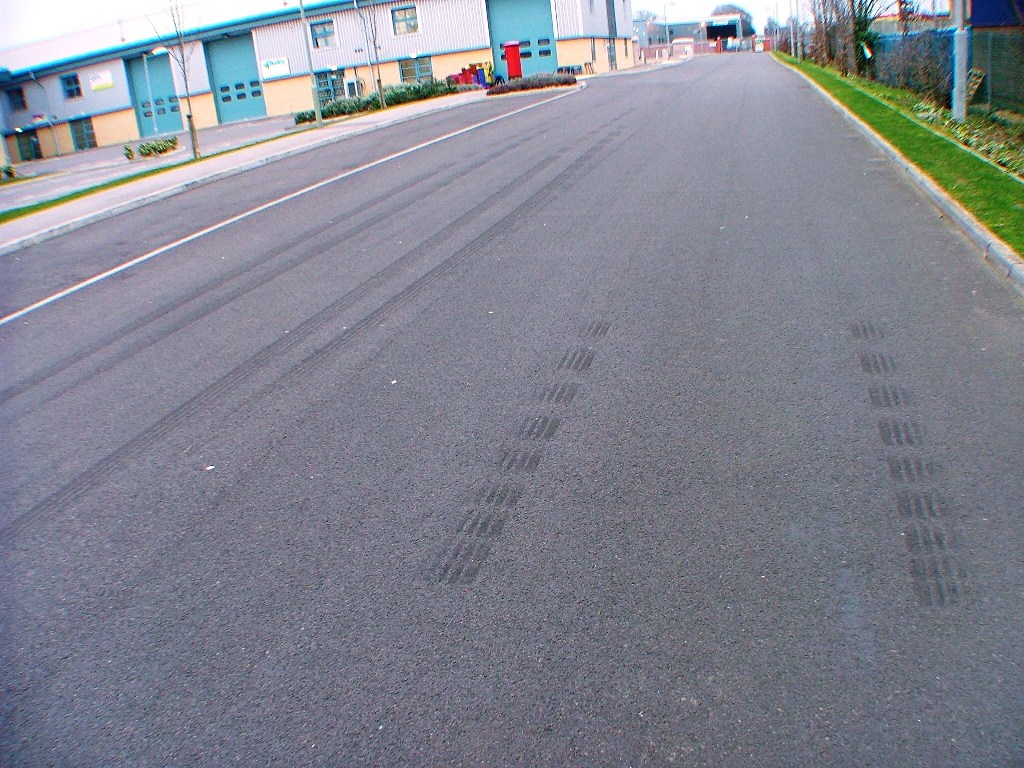
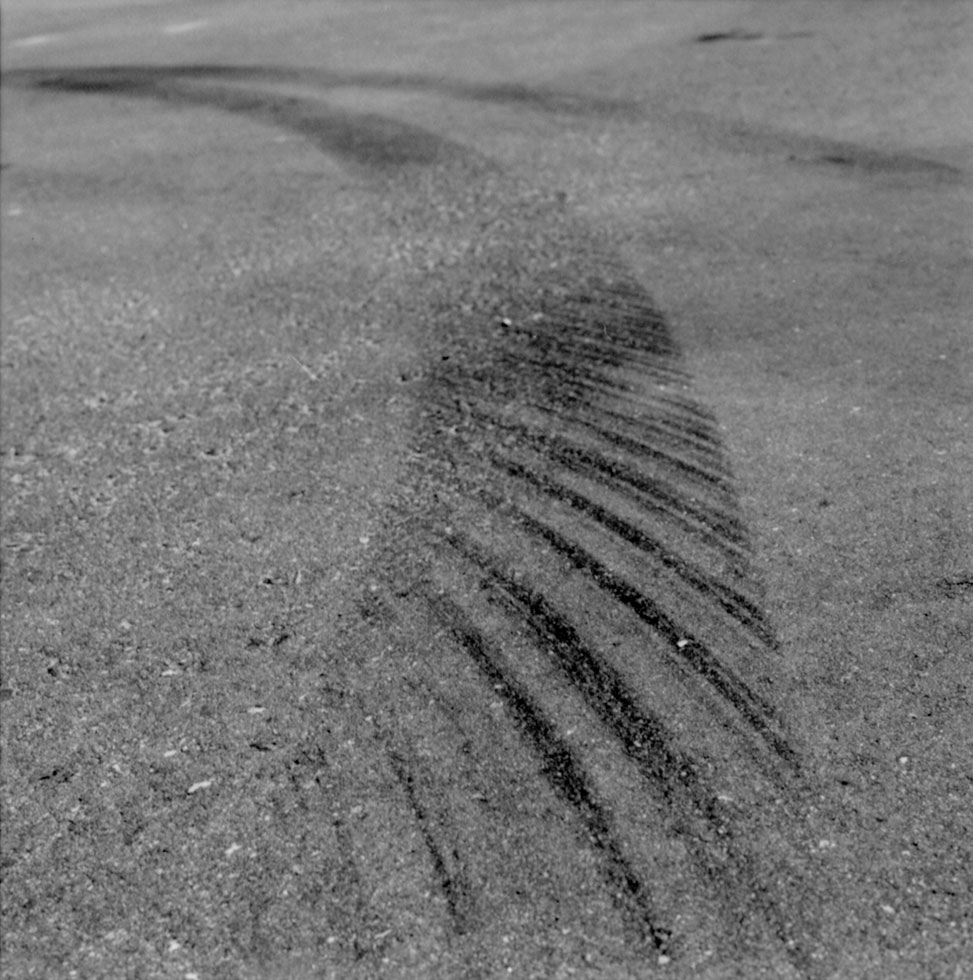
SEMI-TRAILER LOCKED MAXIS
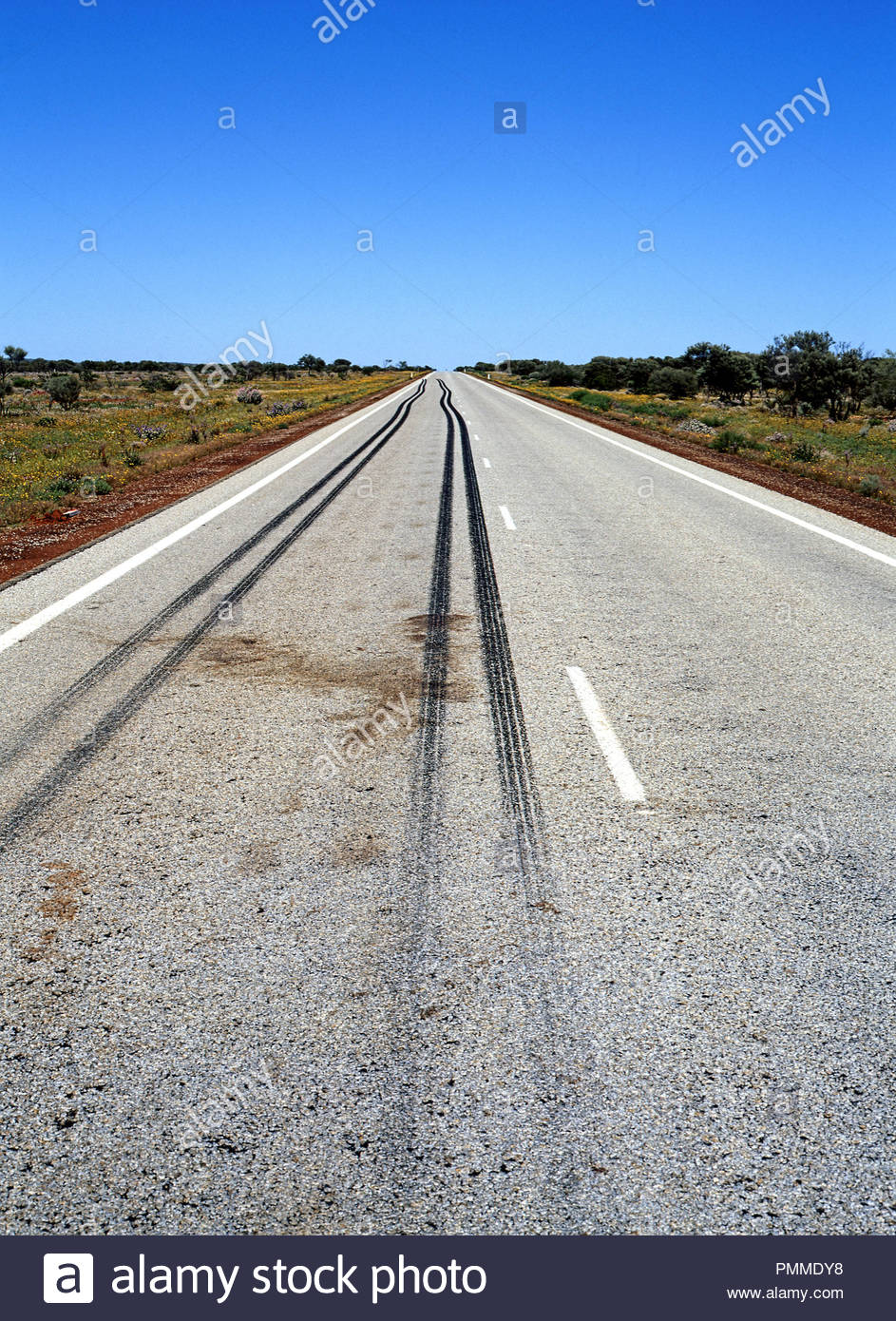
OFFSET OR JOG MARKS INTENTIONAL PAINTING NO BREAKS ON TRACTOR
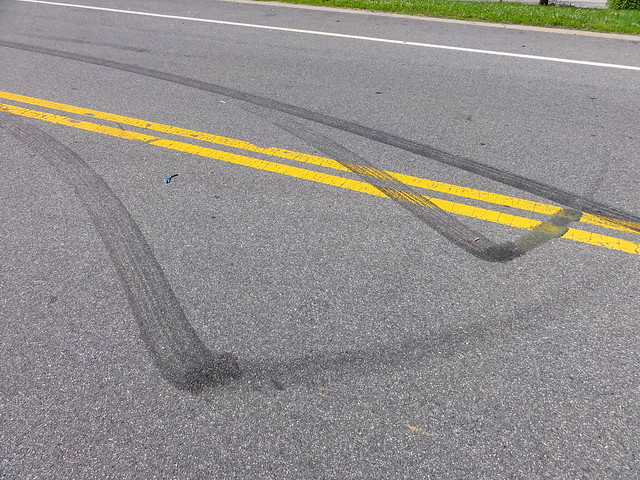
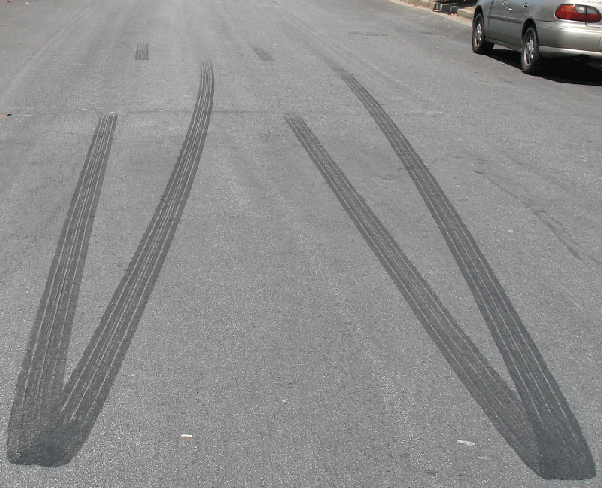
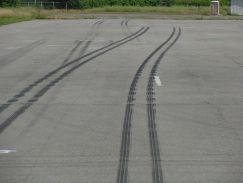
SCALLOPED SKID
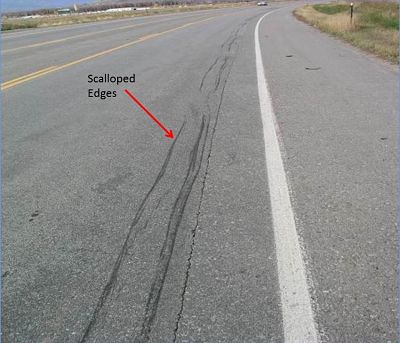
ACCELERATION MARKS
PEAL OUT ACCELERATION MOVING ACCELERATIONS DEMO ACCELERATION
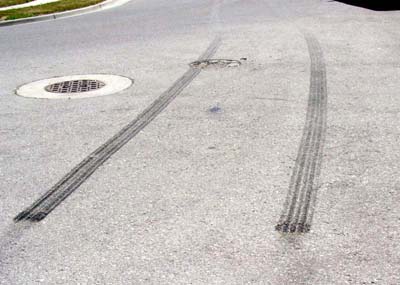
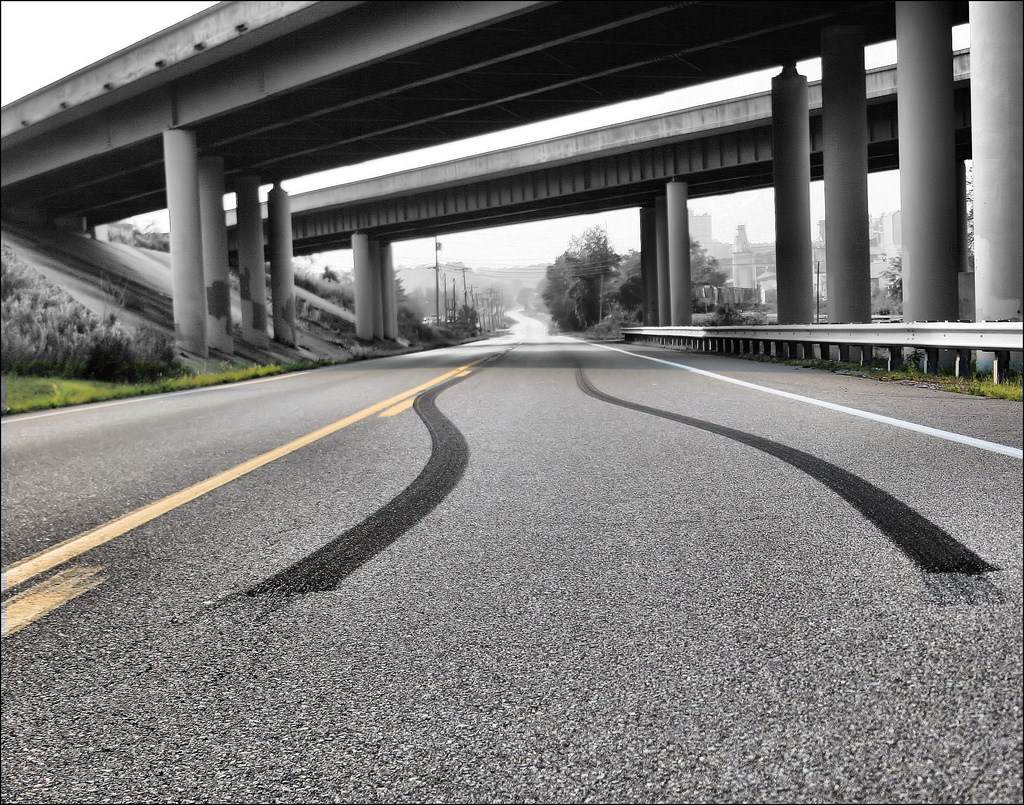
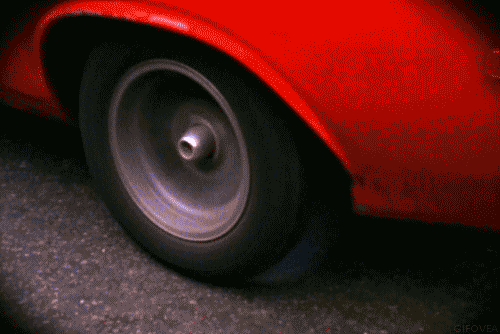
RAIL WHILE STEERING

Characteristics
Skid marks are divided into "acceleration marks" created on acceleration, if the engine provides more power than the tire can transmit; "braking marks," if the brakes "lock up" and cause the tire to slide; or "yaw marks", if the tire slides sideways. Each skid mark has a characteristic appearance, and an experienced accident reconstructionist or forensic engineer can often determine what the vehicle was doing by examining the marks left by the tire.
Contrary to popular belief, skid marks are not caused by pieces of rubber from the tire being deposited on the road because friction heats up the tire. Skid marks are actually bituminous oils in the asphalt that are heated because of the friction of breaking or accelerating and rise to the surface, leaving dark marks. This is why the marks fade. Within one hour, 3-4% of the mark has already faded.
Braking marks will vary depending on whether the car uses ABS or not. If not, there will be two lines. The darker marks on the outside are from the front wheels, while the back tires leave thinner marks. This is because the force exerted makes the wheels take on a conical shape. If the car uses ABS, the marks will be much fainter as less heat is produced by the release-stop mechanism of ABS. Scuff marks may be visible even with ABS.
Do you see any difference between skid marks and acceleration marks? Looking at the beginning of the tire mark, all skid marks start out light and get darker as the skid continues. Acceleration marks start out dark and get lighter as the vehicle reaches its momentum. This is important, since as one case I investigated had a pedestrian pinned against a building. The dead body's torso was draped over the hood of the car which was still against the building. The operator claimed he tried to avoid the collision by skidding, but could not stop in time. The tire marks showed heavy friction marks at the beginning of the alleged "skid" and got lighter as the car reached the pedestrian and the building. Hence, the operator did not attempt to stop by skidding, but rather he committed murder by intentionally accelerating his car directly at the pedestrian.
Another tell tale sign of a skid mark versus an acceleration mark is the ability to steer while accelerating. A skid mark will always remain in a straight line through the center of mass of the vehicle in the direction the vehicle was traveling when entering the skid. Note the pictures of the acceleration marks, the vehicles began accelerating and created either a paint pattern by steering or attempting to avoid collision while accelerating. You can see in the Rail Acceleration photo, the race car has its front wheels turned while the rear tires are spinning. Had the driver not backed off the acceleration, this race car would have begun a centrifugal yaw which would have resulted in the right rear spinning to the outside and the race car would have ended up pointing in the wrong direction. There is one anomaly in the skid patterns. Look at the tractor-trailer skid marks where you can see the dual skid marks of the trailer skidding, however, it is also changing direction. This occurs more times than not when the tractor trailer driver has the front breaks removed from the tractor so he can steer the load around an object or preventing the rig from "jack-knifing". This is not only illegal, but dangerous since it changes the breaking efficiency of the Tractor. This is the only time a skid mark shows directional changes.
Occasionally, you might see a long double pair of skid marks, obviously from a tractor-trailer. This occurs when the air break houses that connect the tractor compressor to the rear tires of the trailer looses compression. The trailer is equipped with what is known as "Maxi" breaks. When the trailer rear tires loose compression, for what ever reason, the maxis engage and attempt to stop the rig. The driver does not hear this and only becomes aware when his forward momentum is stunted or someone draws the driver's attention to the problem. Another indication of tractor-trailer loads are the resulting skid marks. Looking at the "skip-kid" marks left by the trailer portion of the tractor-trailer combination, they are intermittent skid marks. This indicates that the trailer was empty (not load on board) and the trailer began to bounce during the skid.
Yaw marks a curved tire marks, they are actually scrub marks. The tires usually all four are still turning but at the same time sliding sideways. This occurs more times than not on a "hair-pin" curve where the operator realizes he is going too fast to negotiate the curve. Instinctively, the operator tries to avoid going off the road and turns the steering wheel while breaking. This action causes the vehicle to enter a centrifugal yaw, where the rear of the vehicle slides to the outside of the skid. The yaw marks have the distinct "hash marks" within the skid, as seen in the above photo.
Scalloped ksid marks occur when the skidding tire looses inflation and the rubber tire collapses. The scallop marks demonstrated in the above photo that this vehicle had a "blow-out" and began sto skid to a stop.
Finally to round out the above tire marks is the "Off-set" or "Jog". Many times untrained investigators look at the debris field at an accident scene. They believe the point of impact, (POI), is where the majority of the dislodged vehicle parts are scattered on the road surface. This is not an accurate determination of the POI. Looking at the photo of the off set or jog, you can see an abrupt change of direction of the skid. This is where the skidding vehicle came in contact with another object, most probably another vehicle traveling at a 90º angle to the skidding vehicle. At POI the skidding vehicle skids in the direction of the striking vehicle. If the vehicle strikes a fixed object like a building, the resulting tire mark is a scrub of the front tire which is wide and if the vehicle strikes the fixed object at an angle from the center of mass it will rotate in the opposite direction of the impact or to the side with the least resistance to the impact. For example, a vehicle strikes a utility pole with the left front bumper, which is lef to the center of mass the vehicle's right rear will swing out to the right.
Also it should be noted that although your eye may interpret that a vehicle when striking a fixed or semi-stationary object "bounces" this is not what happens. Vehicles DO NOT bounce. The energy that is contained in the system is dissipated by rotation, vaulting or deformation (crush of the vehicle striking parts).